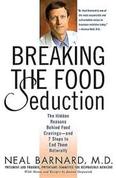
Mr. Johnson remarks that “heart disease and cancer are primarily diseases of aging.” But are they? If a person smokes two packs of cigarettes a day, eats as much saturated fat as he or she can cram into his or her mouth, and sits for five hours a day watching television (the average for Americans), will his or her risk of cancer or heart disease cause a “premature” death? That is, a death before the average age reached by Americans, which is 78. Lifestyle, not aging, is the issue here.
And lifestyle is not merely diet and exercise. It encompasses emotional health, financial stability, stress management as well. A fit person (one whose BMI is in the low 20s and whose heart and lung function is exceptional) who suffers with negative emotions (fear, anger, frustration, jealousy, sadness) has lower immune protection against bacterial infections, viral infections, and cancer cells, which most of us have in our tissues, somewhere or other. A study of 3,000 older people demonstrates this concept perfectly. All had been in long-term satisfying marriages and had gone through the death of the spouse. A highly significant number of surviving spouses (mostly in their 70s and 80s) developed cancer within six months of the spouse’s demise.
Researchers have shown that negative emotions will lower the presence of NK cells (natural killer white blood cells) in the blood stream. This fairly recent (20 years) research escapes press coverage, despite its importance. Without adequate protection, supplied by these cells, we become at risk. So it
pays to follow the LifeNuts lifestyle and learn to be happy.
The other issue that the author dodges is obesity, whose incidence has tripled since the 1950s. Obesity deserves more than one sentence, Mr. Johnson, since it contributes significantly to heart disease, diabetes, and cancer. Yet, it grows like a snowball rolling downhill each year and with it grows our national debt. If we can reverse obesity, as community-based LifeNuts hopes to do, we can prevent premature deaths due to the diseases caused by obesity.
Will a plant-based diet play a major role in preventing obesity? You betcha. In fact, this diet has been proven to override the genes that contribute to Alzheimer’s Disease that Mr. Johnson states is the wild card in this cancer equation. In his book, Power Foods for the Brain, Dr. Neal Barnard explains how a healthy diet, exercise, and mental workouts can prevent this terrible disease.
Mr. Johnson wants to uplift the reader with his news that American life expectancy has increased from 1910 when it was in the mid-50s to today when it is 78.3. But he ignores the fact that the baby boomer generation, now beginning to turn 65 and qualify for Medicare, is our fattest generation and getting fatter each year, which, believe it or not, is going to decrease our average lifespan. He fails to draw attention to the life expectancy of the Japanese (nearly 84) and to their essentially plant-based diet and small-portioned meals. Our youngest generations are also obese (and getting fatter) which means that they, too, will have shorter lives and will likely succumb to heart disease, diabetes, and, Mr. Johnson’s nemesis, cancer. And, on another positive note, they’ll be the proud recipients of the massive national debt that we pass on to them.
LifeNuts hopes to reverse this trend, city by city, suburb by suburb, but, now after the first year’s effort, its message has fallen on deaf ears. Government mandates are failing and cities aren’t doing so well either, even though they offer many exercise options for residents. Maybe one town, somewhere and somehow, will start the program. We can only hope.



 RSS Feed
RSS Feed